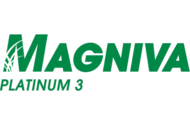Successful silage production takes advantage of good weather conditions and forage maturity. To act quickly, producers should ensure they have properly prepared the ensiling structure, have the right supplies on hand and have the equipment ready.
Storage Design
There are a variety of storage techniques and structures for silage. Each operation must consider its individual needs, forage materials, weather conditions and herd size.
First, producers must determine their storage requirements and select a storage structure — or combination of structures. There are benefits and drawbacks to each storage technique that should be considered.
| Storage Structures | Pros | Cons |
|---|---|---|
| Bunker Silo | • Reduced spoilage across top of the structure • Easy to fill • Easier to feedout than other methods | • Requires greater cost of investment compared to a drive-over pile |
| Pit or Drive-Over Pile | • Requires low investment • Offers greater feed inventory flexibility than other methods • Can be done on any stable floor | • Greater surface space occupied • Lower compaction capacity |
| Bag Silo | • Storage for extra production • Flexibility for smaller forage quantity • Segregation of different forages or harvests | • Lower density • Special equipment required • Damage to the plastic from rodents and mechanical sources • Higher investment per ton ensiled |
| Tower Silo | • Less ground space/ton ensiled • Suitable for direct feeding in the barn • Good density and low permeability | • Higher investment per ton ensiled • Higher risk of accidents due to gases at feedout • More annual maintenance required |
| Wrapped Bales | • Flexible to harvest regarding stage of maturity, small volume harvested • Segregation of different cuts • Suitable for selling forage | • Specific equipment required • Higher cost per ton ensiled |
Clean Site
Clean silage structures or platforms to help avoid contamination from molds or effluent. Use a high-pressure washer to clean the area prior to filling. A clean surface is the best start for producing hygienic silage. For bunkers and piles directly on the ground without an asphalt or concrete base, keep the ground and “walls” straight and smooth.
In addition, ensure water can drain away from the silage mass. This can help reduce the opportunity for spoilage losses.
Ensiling structures should be examined for wear and tear. The fermentation process creates acid, which can damage the quality of concrete and other surfaces. Depending on the structure, seals should be checked and repaired as necessary. A clean sheet of plastic can be placed along the walls and floor to further seal and protect the structure from acid.
As the structure is filled, be sure to maintain cleanliness. Do not roll dirty equipment wheels onto clean forage.
Order Materials
Plan ahead to make sure materials are obtained in time. Be sure to think about:
- Forage inoculants
- Covering materials
- Additional or replacement weights, such as tires and gravel bags
More information about considerations for each of these purchases is covered in other sections.
Equipment Preparation
Prepare harvest and processing equipment. Ensure inoculant applicators are clean, sanitized, well-maintained and properly calibrated according to the manufacturer’s directions.
Sharpen knives on the harvester to get a more uniform cut. Sharp knives can reduce power requirements on the equipment. Also, be sure to check the wear on the shear bar and the clearance between the knives and shear bar. Too much clearance can slow harvest time and create uneven material in the feed.
If using a kernel processor, inspect all equipment for damage from the previous year and check the roll gap setting is appropriate for your crop.









